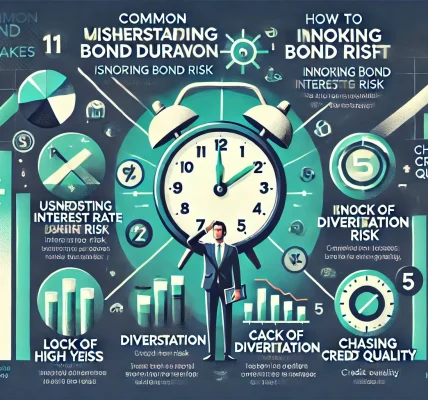Retirement planning is a crucial aspect of financial security. As you approach retirement, ensuring that you have a well-rounded investment portfolio becomes essential to provide stability and generate income. Among the many investment options available, bonds play a significant role in achieving your retirement goals. In this blog, we will explore the importance of bonds in retirement planning, how they work, and how to effectively incorporate them into your retirement strategy.
What Are Bonds?
Bonds are debt securities issued by governments, municipalities, or corporations. When you invest in bonds, you are essentially lending money to the issuer in exchange for periodic interest payments (known as the coupon) and the return of the principal (the amount you initially invested) when the bond matures.
Bonds are considered a relatively low-risk investment compared to stocks because they provide fixed income and are less volatile. This makes them an attractive option for retirement planning, where stability and predictable income are key.
Why Are Bonds Important for Retirement?
As you near retirement, your investment strategy needs to shift toward preserving capital and generating a reliable income stream. Bonds can help you achieve both. Here’s why:
- Stable Income Stream: One of the primary benefits of bonds is their ability to provide a consistent income through regular interest payments. For retirees, this steady income can be used to cover day-to-day expenses without having to rely on selling off other assets, like stocks, which may be more volatile.
- Risk Reduction: As a retiree, you are likely looking to minimize the risk of your investment portfolio. Bonds tend to be less volatile than stocks and provide stability during market downturns. By allocating a portion of your portfolio to bonds, you can reduce overall risk while still achieving moderate returns.
- Diversification: Diversification is a cornerstone of any successful investment strategy. Including bonds in your retirement portfolio helps balance out the risk of equity investments. Since bonds often perform differently from stocks—especially during periods of economic uncertainty—they can help smooth out the ups and downs of your portfolio.
- Capital Preservation: Bonds are often used as a tool to preserve capital. While stocks can provide higher returns, they also come with greater risk. Bonds, on the other hand, are more predictable and can help protect your principal investment, making them an essential component of a retirement strategy focused on preserving wealth.
- Tax Benefits: Some bonds, such as municipal bonds, offer tax advantages. The interest earned on municipal bonds is often exempt from federal income taxes, and sometimes state taxes as well. This can be particularly beneficial for retirees looking to reduce their tax burden in retirement.
How to Include Bonds in Your Retirement Portfolio
When it comes to building a retirement portfolio, bonds should not be an afterthought. Here’s how you can effectively incorporate them into your retirement strategy:
- Consider Bond Funds or ETFs: If you don’t want to pick individual bonds, bond funds or Exchange-Traded Funds (ETFs) are a great option. These funds pool money from multiple investors to buy a variety of bonds, providing instant diversification. Bond funds or ETFs can be an excellent choice for retirees seeking exposure to bonds without the hassle of individual bond management.
- Determine the Right Mix: The ideal allocation of bonds in your portfolio depends on factors such as your age, risk tolerance, and income needs. A general rule of thumb is the “100 minus age” strategy, which suggests you allocate a percentage of your portfolio equal to 100 minus your age in bonds. For example, if you’re 60 years old, you might consider having 40% of your portfolio in bonds.
- Focus on High-Quality Bonds: When choosing bonds, especially for retirement, it’s important to focus on high-quality bonds—those with a high credit rating. U.S. Treasury bonds, municipal bonds, and investment-grade corporate bonds are all good options. These bonds tend to have lower yields but offer more security.
- Consider Bond Ladders: A bond ladder strategy involves purchasing bonds with varying maturity dates. This can help manage interest rate risk and ensure a steady stream of income as bonds mature. For example, you might invest in bonds that mature in 1, 3, 5, and 10 years, allowing you to reinvest as each bond matures.
- Monitor Your Bond Portfolio: Just like any other investment, your bond portfolio should be periodically reviewed. As interest rates change, the value of your bonds can fluctuate. Stay informed and consider adjusting your portfolio to reflect changes in interest rates or your financial goals.
Types of Bonds to Consider for Retirement
There are various types of bonds you can invest in, and each has its own benefits. Here are a few types that may be suitable for retirement planning:
- U.S. Treasury Bonds: Considered the safest of all bonds, U.S. Treasury bonds are backed by the federal government and are an excellent choice for risk-averse investors.
- Municipal Bonds: These bonds are issued by state or local governments and offer tax-free interest income, making them a great option for retirees in higher tax brackets.
- Corporate Bonds: Issued by companies, corporate bonds generally offer higher yields than government bonds, but they come with more risk.
- High-Yield Bonds: Also known as junk bonds, these offer higher returns but come with a higher level of risk. While they may not be suitable for all retirees, they can be considered for those with a higher risk tolerance.
Conclusion
Bonds play a pivotal role in retirement planning by providing stability, a reliable income stream, and capital preservation. Incorporating bonds into your portfolio allows you to manage risk, achieve diversification, and reduce the impact of market volatility. Whether you choose individual bonds, bond funds, or ETFs, it’s essential to tailor your bond investments to your specific retirement goals.
By understanding the role of bonds in retirement planning and carefully selecting the right bond investments, you can build a secure financial future for yourself and enjoy peace of mind in your retirement years.




